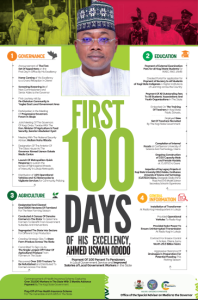Seasoned actress, Ronke Osodi One (Ronke Ojo), has said that there is infiltration into Hollywood due to the unemployment ravaging the country.
Some people have observed that a lot of the folks in the industry are not really talented, thus affecting the pace of its growth.
Osodi Oke corroborates this in an interview with ‘Sunday Scoop’ but conceded that there is nothing anyone can do about it.
“I wouldn’t say there are some things I don’t like about the industry because there are no jobs in Nigeria and this is the only opportunity many people have. I would have said the way people are coming into the industry is not the way they are supposed to, but people are just trying to make ends meet. We really cannot blame anybody.
“There are lawyers, doctors, engineers and other professionals among us who are supposed to be working in other fields. But when jobs are not forthcoming, they have no choice but to join Nollywood. Though I personally don’t like it, there is really nothing we can do about it,” she says.
Apart from being the second largest in the world in terms of number of films being produced, hollywood has been a source of employment for many people, especially youths. It has also boosted the country’s tourism and diplomatic profiles.
As observed by experts, however, film-making in Nigeria is divided largely along regional, and marginally ethnic and religious lines.
One of the industry’s online profiles indicates: “Thus, there are distinct film industries – each seeking to portray the concern of the particular section and ethnicity it represents. However, there is the English-language film industry which is a melting pot for filmmaking and filmmakers from most of the regional industries.
“The Yoruba-language cinema is a sub-industry of Nollywood, with most of its practitioners in the Western region of Nigeria. The Yoruba-language cinema began as actors of various Yoruba traveling theatre groups began to take their works beyond the stage to delve into movie production using the Celluloid format, as far back as the mid-1960s. These practitioners are considered in some quarters to be the first true Nigerian filmmakers.[10] Movies like Kongi’s Harvest (1971), Bull Frog in The Sun (1974), Bisi, Daughter of The River (1977), Jaiyesimi (1980), and Cry Freedom (1981) fall into this era of a blossoming Yoruba movie industry. Practitioners like Ola Balogun, Duro Ladipo and Adeyemi Afolayan (Ade Love) played a significant role when they came out with “Ajani Ogun” in 1976. This film was one of the few huge success that helped put the Yoruba-language cinema on the map, and it was followed by other productions by Hubert Ogunde and others.[10] One of the first blockbusters from Nigeria, came from the Yoruba language industry; a notable example is Mosebolatan (1985) by Moses Olaiya which grossed ₦107,000 (approx. 2015 ₦44.2 million) in five days of its release.
“The Hausa-language cinema, also known informally as Kannywood, is also a sub-industry of Nollywood, mainly based in Kano. The cinema, which is the largest in Northern Nigeria, slowly evolved from the productions of RTV Kaduna and Radio Kaduna in the 1960s. Veterans like Dalhatu Bawa and Kasimu Yero pioneered drama productions that became popular with the Northern audience. The 1990s saw a dramatic change in the Northern Nigerian cinema, eager to attract more Hausa audience who find Bollywood movies more attractive, Kannywood; a cinematic synthesis of Indian and Hausa culture evolved and became extremely popular. Turmin Danya (“The Draw”), 1990, is usually cited as the first commercially successful Kannywood film. It was quickly followed by others like Gimbiya Fatima and Kiyarda Da Ni.[ Sunusi Shehu of Tauraruwa Magazine created the term “Kannywood” in 1999 and it soon became the popular reference term for the industry. By 2012, over 2000 film companies were registered with the Kano State Filmmakers Association.”



